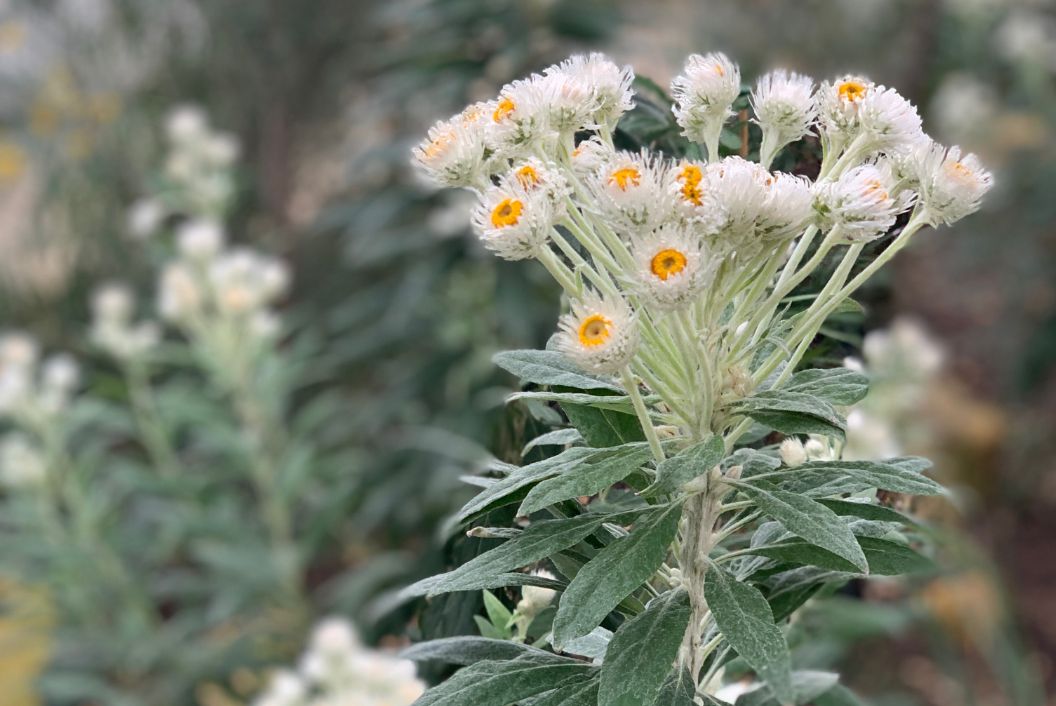
On her frequent walks through the lush greenhouses at Kew, Vale designer Melinda Marquardt photographs and sketches new and inspirational plant life. These drawings and images often make it to the studio, where they’re transformed into full illustrations with meticulous detail. Each one takes on the natural texture and colour of the original plant study, adding depth to the final fabric and wallpaper designs.
 Lily Stripe fabric by The Vale
Lily Stripe fabric by The Vale
Kew Gardens has an extraordinary history, with enough stories to entertain any history buff. Their acres hold over 8.5 million plant specimens and are home to one of the largest, most varied botanical collections in the world. To this day, Kew preserves generations of plants brought to this country by Francis Masson (1772), Joseph Hooker (1841) and many other pioneers of botany and mycology (the study of fungi). Every corner of the globe is represented in its majestic grounds and glasshouses - from the Antarctic to South Africa, and every country in between.
 Kew Gardens in bloom - image by The Vale designer, Melinda Marquardt
Kew Gardens in bloom - image by The Vale designer, Melinda Marquardt
Through the years, Kew has attracted countless artists who have visited the magnificent gardens, all seeking inspiration. Since the gardens’ creation in 1759 by Princess Augusta, Kew’s unrivalled curation of unusual plant life has drawn the attention of so many designers and creatives.
Marianne North, for example, was a pioneering female artist who captured the most exotic plants and travelled the globe looking for new inspiration - not unlike our own designer.
North’s lush and detailed botanical studies enthralled naturalists of the age - including the father of evolution theory, Charles Darwin, who had great respect for her work.
 Nepenthes northiana by Marianne North (named after her) Source: Wikimedia Commons
Nepenthes northiana by Marianne North (named after her) Source: Wikimedia Commons
Her desire to capture the beauty and complex forms of the natural world was the driving force behind her work; and her ultimate passion in life. Her status as a wealthy, single woman made her a target for criticism in society. This was because North travelled to ‘unsuitable’ countries, like Borneo and Japan, to continue the work she’d started at Kew. But this did nothing to discourage her - in fact, it made her more determined. News of her expeditions soon became the talk of London, with all the major papers of the day covering her adventures.
A gallery exhibiting North’s work was eventually opened in 1882 at Kew, the place that inspired her first paintings. This was made all the more remarkable with the knowledge that women weren’t employed in the gardens until twelve years later.
Today at The Vale, we try to follow the example of remarkable artists like Marianne North - sharing the joy of the natural world through design. See more of our botanical-inspired patterns.

